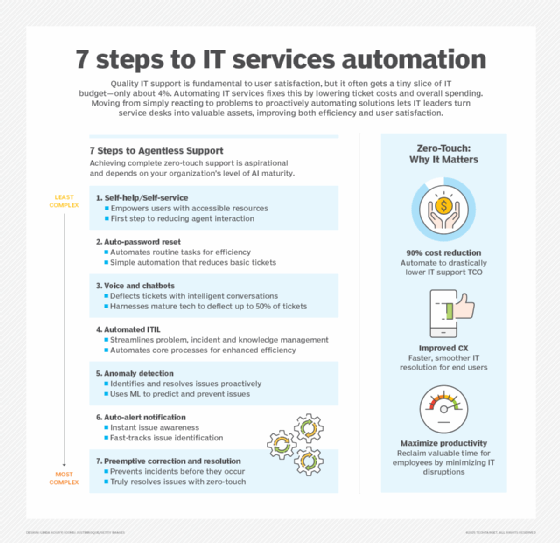CIO priorities 2025: Mastering AI and securing the future
What are the CIO priorities for 2025? This article summarizes expert guidance from the CIO Summit on mastering AI ROI, cybersecurity, talent, and ethics for IT success.
CIO leadership is at a critical inflection point. With businesses everywhere racing to get AI implementation right, ongoing challenges in cybersecurity and ever-changing regulations, IT leaders have never been so important to long-term business success. Yet, with so much change happening all the time, pinning down the most critical priorities for IT is more challenging than ever.
At the March BrightTALK CIO Summit, seven IT and tech experts shared practical strategies and best practices for IT leaders looking to navigate this turbulent yet exciting era of business and understand the top CIO priorities of 2025.
Demonstrating ROI on AI investments: Building a use case supply chain
As AI applications proliferate, pinpointing use cases that deliver tangible business value is an essential CIO priority in 2025. Successfully navigating this landscape requires a strategic approach to identify and capitalize on AI initiatives that demonstrably improve the bottom line.
Technology talent thought leader and Heller CEO Martha Heller emphasized the critical need for a structured "use case supply chain" to maximize the ROI of AI initiatives. According to Heller, achieving tangible business impact requires clearly defined AI use cases, ensuring a direct link between the technology and measurable organizational value. Heller argued that today's IT leaders must evolve into "transformational technology officers," adept at identifying and implementing AI tools with demonstrable ROI. In a follow-up interview, she expanded on this, stating, "There are a number of practical approaches CIOs are using to build this use case supply chain, and primary among them is the AI center of excellence."
CIOs looking to invest in AI should start by identifying key business processes, like customer service or supply chain management, where AI implementation can directly affect revenue or cost savings. Tune into Heller's full presentation to discover how to best prove the ROI of AI investments.
Scaling AI implementation: Strategic frameworks for enterprise-wide adoption
IT leaders must carefully consider where, when and how to effectively implement AI across the organization. However, the widespread employee use of unapproved generative AI (GenAI) tools presents a significant risk: the potential leakage of sensitive business data. To mitigate this "shadow AI" threat, IT leadership must act decisively, implementing pragmatic policies and secure frameworks to govern the responsible use of AI and safeguard critical business information.
Eugina Jordan, Telecom Infra Project chief marketing officer and author, cautioned against fragmented AI implementations. She emphasized the need for clear objectives and a scalable strategy to effectively deploy AI across the entire organization. Jordan argued that hybrid AI -- the strategic combination of open source and closed AI models -- represents the future of enterprise AI. This approach offers the optimal balance: the flexibility and cost-effectiveness of open source tools combined with the scalability and control afforded by closed source platforms.
Infrastructure limitations are a leading cause of failed AI projects, according to 451 Research. Overcome this hurdle and successfully implement AI with Eugina Jordan's step-by-step blueprint for building a hybrid AI infrastructure. Watch her full presentation now for actionable insights and a clear path to AI success.
Kader Sakkaria, Gallagher's head of global data technology, emphasized the critical importance of a structured framework for operationalizing GenAI. This framework, he argued, must encompass data readiness, comprehensive governance and strategic alignment with core business objectives. Drawing on real-world case studies from the insurance brokerage sector, Sakkaria demonstrated the significant gains in efficiency, accuracy and customer satisfaction achievable with GenAI. In a subsequent discussion on change management and employee readiness, Sakkaria advised CIOs to move beyond generic AI training and instead "showcase practical applications for different teams" to increase understanding and accelerate cross-departmental adoption.
Facing challenges with data readiness or securing organizational buy-in for GenAI initiatives? Kader Sakkaria's session offers a structured framework and actionable advice to overcome these hurdles and unlock the transformative potential of GenAI. Watch now to learn how to drive successful GenAI implementation.
Bridging the AI skills gap: Talent development strategies for CIOs
The intense focus on AI has created fierce competition for skilled talent. Recognizing that AI's transformative potential surpasses any previous technological shift, businesses must fundamentally redesign their talent development strategies. These strategies must prioritize cultivating talent capable of not only implementing current AI tools effectively, but also anticipating and adapting to the technology's rapidly evolving capabilities.
Senior technology executive and Agile expert Giles Lindsay asserted that basic AI fluency is no longer sufficient with 75% of enterprises now integrating AI into at least one core business function. Faced with a surge in AI-related roles, Lindsay advocated for prioritizing internal talent development. He argued that businesses must revolutionize their leadership training programs to embed AI literacy across all functions, enabling leaders to understand "how AI models work, recognize their limitations and know how they fit into business operations." This expanded AI education, Lindsay contended, must extend beyond purely technical training to encompass strategic thinking, governance and leadership development.
Get the critical skills needed to transform digital natives into strategic AI leaders, and learn how to bridge the gap between technical proficiency and ethical decision-making by watching Lindsay's full presentation here.
Proactive cyberthreat intelligence: Monitoring the dark web for breach prevention
Cybersecurity remains a critical and escalating concern for CIOs. With the proliferation of threat actors and the increasing sophistication of their tools, securing business IT ecosystems presents unprecedented challenges.
To proactively mitigate cybersecurity risks, Alex Holden, chief information security officer of Hold Security, emphasized the strategic value of monitoring the dark web to gain a deeper understanding of the evolving threat landscape. Sharing compelling anecdotes from his direct engagements with hackers and cybercriminals, Holden illustrated how understanding their motivations and tactics provides critical insight into their behavior, activities and vulnerabilities. "Knowing their approaches allows us to understand what they're going to do next," Holden explained. By "socially engineering the bad guys," Holden and his team have successfully preempted attacks, identified intended targets and uncovered exploitable weaknesses within their infrastructure before a breach occurred.
Unlock the power of dark web insights to transform your cybersecurity strategy. Watch Alex Holden's session for an exclusive look inside this hidden world, and learn how monitoring dark web forums and using threat intelligence feeds can empower you to identify vulnerabilities, reinforce security and educate your workforce about the evolving cyberthreat landscape.
AI-powered IT support: Automating services for improved productivity and reduced costs
The manual, repetitive nature of many IT support tasks overwhelms staff and makes this area ripe for automation.
Citing data from his latest research, Jeff Rumburg, co-founder and managing partner of MetricNet, asserted that AI-driven transformation can slash IT support costs by up to 90%. Despite their critical role in shaping customer perception, service and support often constitute only 4% of IT spending, frequently viewed as a cost center with limited perceived economic value. Rumburg argued that strategically implemented AI automation can transform IT support into a significant value driver, as "quality of support drives end-user productivity." He proposed that businesses can potentially eliminate up to 70% of total ticket volume by focusing on high-velocity problems, thereby shifting problem management from a reactive burden to a proactive, strategic asset.
Gain a competitive edge in the age of AI by viewing Rumburg's complete session here to master the megatrends shaping IT service and support and build a zero-touch, strategically aligned service desk.

Ethical AI and innovation: A blueprint for responsible technology leadership
Heightened scrutiny from regulators and consumers regarding the sustainability and ethical implications of business decisions is making ethical alignment a top CIO priority.
Dr. Abilio Oliveira, solutions and innovation manager at ZOOMtecnologia, presented a practical blueprint for navigating the ethical complexities of technological advancement. In his session, Oliveira emphasized ethics as a foundational requirement in today's digital environment, stating, "Ethical lapses erode trust, lead to regulatory scrutiny and cause irreparable damage to both business and consumer."
Oliveira outlined four actionable steps organizations can take to implement ethically sound innovations:
- Establish an ethical review standards board.
- Integrate ethics into product development processes.
- Engage diverse stakeholders in decision-making to mitigate bias.
- Develop clear ethical policies and standards governing the use of emerging technologies.
He stressed that fostering ethical awareness among employees is crucial for the long-term success of the organization. Reinforcing this point in a subsequent interview, Oliveira asserted that "as ESG [environmental, social and governance] transformed corporate accountability, AI ethics and transparency will become non-negotiable for investors, regulators and consumers."
Check out Oliveira's full discussion here to learn the business advantages of integrating ethics into companywide decision-making and how to implement a responsible technology strategy.
Ana Salom-Boira is an editorial manager within TechTarget's Editorial Summits team. She also produces and hosts the podcast series Tech Beyond the Hype, which explores how emerging technologies and the latest business trends are shaping the future of work.







